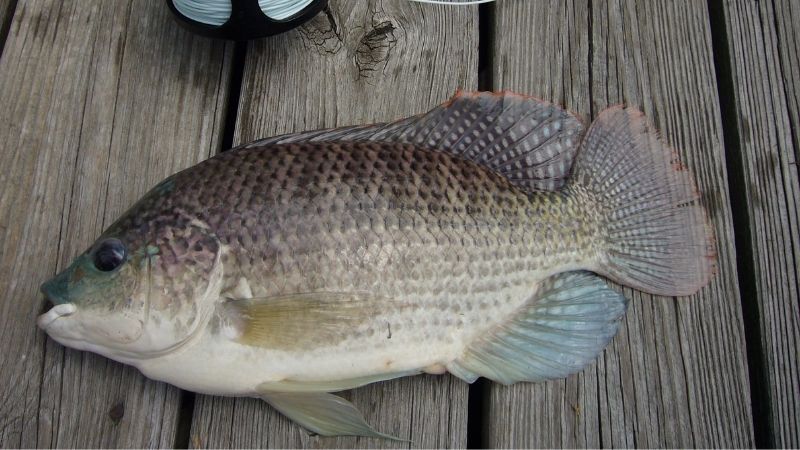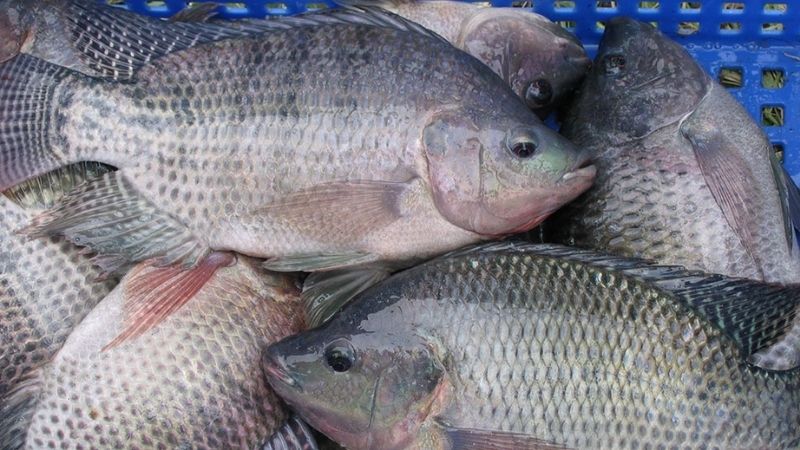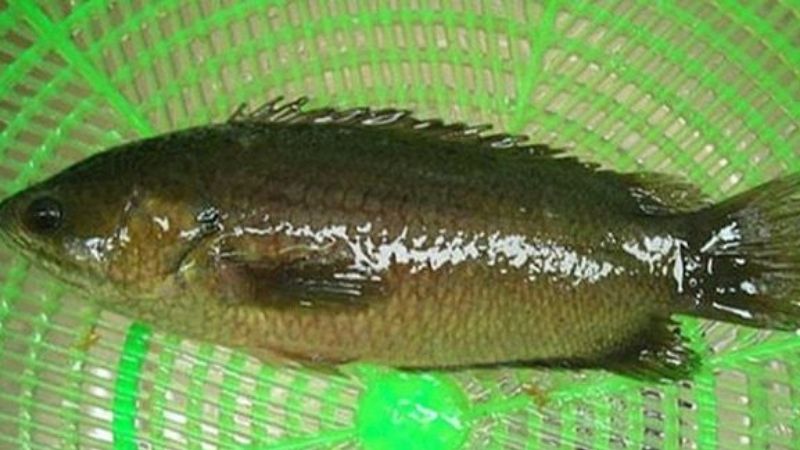The rohu and tilapia are two common fish species in Vietnamese daily menus. However, due to their similar names, many people confuse these two fish. Join us in today’s article as we delve deeper into their distinct characteristics.
1 About Rohu and Tilapia
Rohu is a species of perch-like fish belonging to the Perciformes order, which includes various species within the Labeo genus. In Vietnam, rohu is commonly known as “ca ro dong” and is a staple in everyday meals.
 Information about tilapia and rohu
Information about tilapia and rohu
Tilapia, on the other hand, is a species of freshwater fish, although some species can also thrive in brackish or saltwater environments. They are primarily found in rivers, canals, ponds, and lakes. Tilapia belongs to the Cichlidae family and originates from Africa and the Middle East. It has been introduced to various regions and has become widely popular.
2 How to Distinguish Rohu and Tilapia
Physical Characteristics
Tilapia has a slightly purple body with shiny scales and 9-12 dark parallel stripes from the back to the belly. Its tail fin features prominent black stripes running from the top to the bottom and spreading across the entire fin. The edges of the dorsal and tail fins have a pale pink hue. Tilapia can grow up to 0.6 meters in length and weigh up to 4 kilograms, with an average weight of 0.4-0.6 kilograms per fish.
 Tilapia’s physical appearance
Tilapia’s physical appearance
Rohu, in contrast, exhibits a yellowish to pale gray color, with a brighter belly compared to its back. It has a distinct dark spot on the tail and another spot behind the gills. The gill cover has a serrated appearance. Rohu are characterized by strong, sharp teeth arranged in rows along both jaws, with additional small, pointed teeth on the jaws.
 Rohu’s physical appearance
Rohu’s physical appearance
Nutritional Value
Tilapia is a rapidly growing and healthy fish that has long been a nutritious food source. Its flesh is sweet and nutty, and it is rich in protein, low in fat, and free from toxins. It is known for its nutritious and health-beneficial properties.
 Tilapia’s sweet and nutritious flesh
Tilapia’s sweet and nutritious flesh
Rohu, on the other hand, boasts fatty, aromatic, and chewy flesh, making it highly prized in the market, despite its abundance of bones. They are omnivorous, feeding on mollusks, small fish, and vegetation, including grass.
 Rohu’s fatty and tasty flesh, but with many bones
Rohu’s fatty and tasty flesh, but with many bones
Price Comparison
Rohu typically sells for 120,000 VND per kilogram, while tilapia has a more affordable price range of 50,000 to 55,000 VND per kilogram. You can purchase these fish from local fish stalls, shops, seafood markets, or supermarkets.
3 Tips for Choosing Fresh Fish
Check the Eyes
One way to select fresh fish is to examine its eyes. Fresh fish will have clear, bright eyes that are slightly bulging, indicating that the fish is still firm and fresh.
 Fresh fish have clear, bright, and slightly bulging eyes
Fresh fish have clear, bright, and slightly bulging eyes
Examine the Scales and Skin
Fresh fish should have bright, shiny scales that are tightly packed. Avoid buying any fish with missing scales, as it could indicate that the fish has been dead for a long time. For scaleless fish, ensure the skin is glossy and moist, without any discoloration.
 Fresh fish have bright, shiny scales and moist skin
Fresh fish have bright, shiny scales and moist skin
Firm Flesh
Fresh fish will have firm, resilient flesh. If the flesh feels soft or appears pale, the fish is not fresh. Fresh fish will also have elastic skin that bounces back when pressed, without any signs of tearing or brittleness.
 Fresh fish have firm, resilient flesh
Fresh fish have firm, resilient flesh
Smell
The smell of the fish is another important indicator of its freshness. If you pick up a fish and detect a strong fishy odor, it’s a sign that the fish is beginning to spoil. Additionally, if the fish emits an ammonia-like smell, it’s likely that the fish hasn’t been fresh for quite some time.
We hope this article has helped you understand the differences between rohu and tilapia. Stay tuned for more informative articles and useful tips!



































